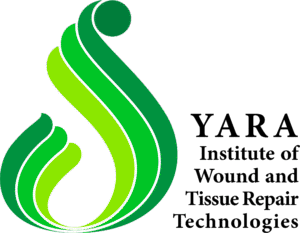The Medical Laser Research Department was established with the aim of conducting clinical studies on the diagnostic and therapeutic applications of lasers and light. The department’s primary research focus is on the application of lasers in dermatology and surgery. In collaboration with specialized clinics in dermatology, wound care, and dentistry, this research department continues its scientific efforts to innovate new medical applications of lasers and to enhance existing ones.
• Photonics (Light and Laser).
• Dermatology.
• Wound and Tissue Repair
- To advance the fundamental and clinical applications of lasers and light in dermatology, tissue regeneration, and wound repair.
- To develop and utilize biological and synthetic wound dressings for wound repair
- To design and apply cell-based therapies and cell-derived products for skin rejuvenation, dermatologic care, and wound/tissue repair
• Webinars, training courses, and specialized workshops: Capacity-building (training) for physicians, students, and fundamental-science specialists on advanced cellular and molecular techniques.
• Research projects: Collaboration with universities and clinical centers to conduct fundamental and applied studies in photonics/laser medicine, dermatologic therapies, and treatment of dermatologic diseases and wounds.
• Clinical investigations to assess therapeutic efficacy: Preclinical and clinical assessments of novel products and treatments using appropriately designed clinical studies.
• Therapeutic Applications of Light and Laser in Dermatology and Surgery
• Diagnostic Applications of Light and Laser in Dermatology
• Laser–Tissue Interactions
• NACLT Project
ن
ن
ن
ن
ن
- Evaluation of the efficacy of silver sulfadiazine topical cream containing epidermal growth factor (EGF; “Bernamin”) in the repair of diabetic foot ulcers.
- Phase II clinical trial: Comparison of the safety and efficacy of alginate hydrogel dressing + placenta-derived stem cells versus alginate hydrogel dressing + secretome in diabetic foot ulcers resistant to standard care.
- Directed differentiation of adipose tissue–derived mesenchymal stem cells into osteogenic lineage using optogenetic technology.
- Assessment of low-level laser irradiation effects on proliferation, pluripotency, and angiogenesis-related protein expression in human dental mesenchymal stem cells.
- Evaluation of an optimized lyophilization (freeze-drying) method to preserve the physicochemical properties and biological function of exosomes derived from adipose tissue mesenchymal stem cells.
- Mitotherapy in wound repair.
- Application of optogenetics for vision restoration in rabbits.
- Investigation of the effect of saffron (Crocus sativus) extract on healing diabetic wounds in mice.
- Formulation, preparation, characterization, and preclinical evaluation of an ivermectin-containing hydrogel for the treatment of diabetic wounds.
- Formulation, characterization, in-vitro studies, and clinical monitoring of a hydrogel wound dressing containing a local anesthetic for pain management in chronic wounds.
- Development of a wound dressing containing activated carbon and silver and iron ions for infection control, exudate absorption, and odor mitigation.
- Preclinical safety and efficacy assessment of exosomes from adipose-derived mesenchymal stem cells embedded in an alginate–hyaluronic acid hydrogel on mouse embryo development.
- Effects of low-level laser therapy (LLLT) and carboxytherapy on cellular factors of mesenchymal stem cells.
- Evaluation of low-level laser effects on proliferation and stemness properties of dermal papilla cells derived from human hair follicles.
- Dose–response comparison between low-level laser and LED on a human fibroblast cell line.
- Adult stem cells derived from human adipose tissue: effect of photobiomodulation (low-level laser therapy) on directed cell migration in the wound electric field.
- Production and in-vitro characterization of conditioned medium from adipose-derived mesenchymal stem cells in rats.
- Investigation of the effect of autologous dermal fibroblast transplantation, alone or combined with mesenchymal stem cells, on skin injury repair in a diabetic rat model.
- Design and localization (indigenization) of manufacturing of a growth factor–loaded hydrogel wound dressing for the treatment of skin wounds.

